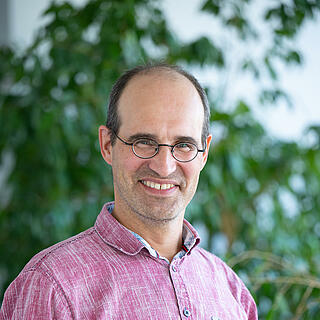A peatland can do it

© foto-stuemper – stock.adobe.com
Christiane Weihe
A peatland can do it. And so can a tree. And even seagrass does it. All of them are natural carbon sinks. So are forests and grassland, farmland and marine coastal ecosystems. Natural sinks remove carbon dioxide from the atmosphere and store it in plants and soil – a valuable climate service that we cannot dispense with on the path towards climate neutrality. However, these carbon sinks face multiple threats. Hot, dry summers are reducing the vitality of our forests, marine coastal ecosystems are suffering the harmful effects of industrial fishing, and intensive agriculture is impacting our farmland. How much potential do natural carbon sinks have to offer? And what do they need to unlock it? The Oeko-Institut is researching this topic in many of its projects.
Have you ever thought to yourself, my garden hedge will absorb the CO2 anyway, so I can carry on driving my polluting combustion engine car? Think again! Granted, natural sinks have major potential for climate change mitigation, but we need them to absorb emissions that cannot be avoided – such as methane from digestive processes in cattle. “The first and most important step is always to cut emissions as far as possible,” says Judith Reise, a Senior Researcher in the Oeko-Institut’s Energy and Climate Division. “Natural carbon sinks are not a substitute for reduction targets.”
Germany’s Federal Climate Change Act requires the land use, land-use change and forestry (LULUCF) sector to meet clear CO2 sequestration targets: at least minus 25 million tonnes of CO2 equivalent (CO2e) annually by 2030, minus 35 million tonnes of CO2e annually by 2040 and minus 40 million tonnes of CO2e annually by 2045. “In my view, achieving the 2045 targets is quite realistic,” says Judith Reise. “But this also means that we must act now. The fact is that natural sinks do not appear overnight. It takes years to establish new tracts of forest, in particular, and rewetting peatlands also takes time to have an effect.”
Multiple measures
Natural carbon sinks and reservoirs are as diverse as the measures needed to protect and restore them. The Federal Action Plan on Nature-based Solutions for Climate and Biodiversity, adopted by the German government in March 2023, provides for an extensive package of measures (see interview with Tom Kirschey on p. 3). “These measures are broad in scope and identify the 10 key fields of action – from protection of peatlands and a near-natural water balance to nature-based climate action in settlement and transport areas,” says Judith Reise. “However, policies on nature-based climate action are still lacking in detail in many respects. For example, there is still no clear proposal on how we intend to contribute to the target of planting three billion trees, which is set in the EU’s Biodiversity Strategy.” From her perspective, another question which remains unanswered is where the sites required for natural sinks are to come from. “There are very substantial user conflicts, because agriculture alone has a massive requirement for land – and, of course, it is reluctant to make concessions here. Simultaneously, we will need arable land, in particular, for actions such as forest renewal.”
Great potential
In the Transformation to a Completely Greenhouse Gas Neutral Germany (CARE) project on behalf of the German Environment Agency (UBA), the Oeko-Institut identifies to what extent natural carbon sinks and the conservation of natural carbon reservoirs have potential to contribute to the goal of climate neutrality by 2045. “We are also outlining the measures that are necessary to leverage this potential, as well as the timeframes in which they might take effect,” says Judith Reise. Forests in particular have immense climate change mitigation potential: they could sequester more than 40 million tonnes of CO2 equivalent annually by 2050.
From Judith Reise’s perspective, it is useful to differentiate between forest types. For example, less well-adapted spruce monocultures at unsuitable sites should be converted to climate-resilient forest ecosystems, while in many deciduous mixed forests, there is scope to scale back the management regime and reduce felling in order to increase the timber stock and thereby boost the forests’ sink capacities. Harvested wood should be used to manufacture goods that are as durable as possible, such as timber for the construction industry, in order to keep the carbon locked away (for more information on forests and timber use, see “Trees have potential” on p. 8).
However, the key measure, says Judith Reise, is to restore the water level in peat soils beneath farmland and grassland in order to preserve them as carbon sinks. “Peat soils have sequestered very large amounts of carbon over the course of millennia. On farmed post-bog soils with low water levels, the peat decomposes year on year and the stored carbon is released as CO2. Simply by rewetting farmed peat soils, there is potential to avoid emissions amounting to 30 million tonnes of CO2 equivalent annually. Rewetting also supports species diversity and helps to maintain the landscape’s hydrological balance at the same time,” Judith Reise explains. However, a regulated approach to rewetting is essential; otherwise, peatlands can release large amounts of methane. “Various measures can be applied to prevent this, or at least to mitigate it significantly. One option is to remove a layer of turf prior to rewetting and avoid uncontrolled flooding of the peatland.” It is also important, she says, to safeguard water availability, taking due account of the landscape hydrology as a whole – and to plan for periods when water is in short supply as a consequence of climate change. A multitude of peatland restoration projects are currently being initiated – and many are meeting with a positive response from the farming community, as Judith Reise explains. “Many farmers are finding it almost impossible to grow anything on these desiccated soils, so they have a positive attitude towards measures that raise the water level in their fields; they can then switch to new cultivation systems such as paludiculture. This change in the way land is farmed is essential for nature-based climate action.”
Agriculture has countless opportunities to increase the potential of natural sinks. “For example, it is important to boost humus enrichment by intercropping and thus optimise the nutrient content in the soil. Agroforestry measures are also useful. This includes planting hedges and trees in fields: they absorb carbon dioxide and store it in their biomass. It’s a quick and effective measure because fast-growing trees and shrubs can be utilised here,” says Judith Reise. “Agroforestry measures can stabilise the water balance and protect against soil erosion. Native hedges in fields are also an important habitat for birds and insects and thus help to protect biodiversity.” But climate action is not just for the countryside: planting trees in urban spaces also makes it possible to sequester CO2. “However, this is mainly about enhancing public wellbeing – by cooling the ambient temperature, for example.” Consumers have a role to play as well. It takes between five and 10 plant calories to produce one calorie of animal product. Decreasing consumption of animal products such as milk and meat leads to a reduction in livestock farming and shrinks the amount of land needed to grow fodder crops. “These sites can then be used to establish more forests, set up agroforestry systems, carry out rewetting of peat soils, or switch to forms of agriculture that are gentler on the soil.”
Creating incentives
Within the CARE project framework, the Oeko-Institut experts and various partners have also devised an incentive system that provides financial rewards for forest enterprises, with the aim of boosting the climate and biodiversity services that the forests provide. “In our view, promoting ecosystem services in the context of forest management is a sensible approach. This can be achieved with a system of market-based certificate trading, among other things,” says Dr Klaus Hennenberg from the Energy and Climate Division. Under the project team’s proposal, participating forest owners must first meet certain basic requirements relating to biodiversity, such as natural forest regeneration and maintenance of a healthy soil structure. Forest owners who meet additional requirements and opt to carry out further measures then qualify for supplementary funding from the state. “Anyone meeting the basic forest biodiversity requirements can additionally participate in forest certificate trading,” Dr Hennenberg suggests. “In this market, certificates for the sink services provided by forests would be issued to private investors, who can then participate in financing nature-related climate action.”
Win-Win-Win
A peatland can do it, and so can a tree – and a seagrass meadow. But not to an infinite extent, and not without appropriate protection. At the same time, it is important to broaden the perspective: if we maintain natural carbon sinks, this not only benefits the climate. Far from it: there are numerous synergies with the conservation of biodiversity and ecosystem services. “Measures of this kind improve the landscapes’ hydrological balance, protect us from storms and soil erosion, provide cooling in hot summers, preserve species diversity, improve soil fertility, and assist us to adapt to climate change, which is already happening,” says Judith Reise. “They thus help us, no less, to safeguard the natural resource base on which our lives depend.”
---
Judith Reise holds a Master of Science in Global Change Ecology. In 2019, she joined the Oeko-Institut’s Energy and Climate Division, where she works on issues such as forest ecology and sustainable forest management and explores options for protecting and restoring carbon-rich ecosystems.
Contacts at the Oeko-Institut
Further information
Magazine eco@work, Issue March 2019: Forests: For climate and biodiversity
Thematic web page: Agriculture
Magazine eco@work, Issue December 2021: Diversity at risk. How to preserve biodiversity?
Thematic web page: Biodiversity
Further information (in German only)
Podcast Wenden bitte!, Episode 15: Ist der Wald noch zu retten?
Thematic web page on the German Environment Ministry (BMUV) website: Nature-based climate action
Further information (in German only)

